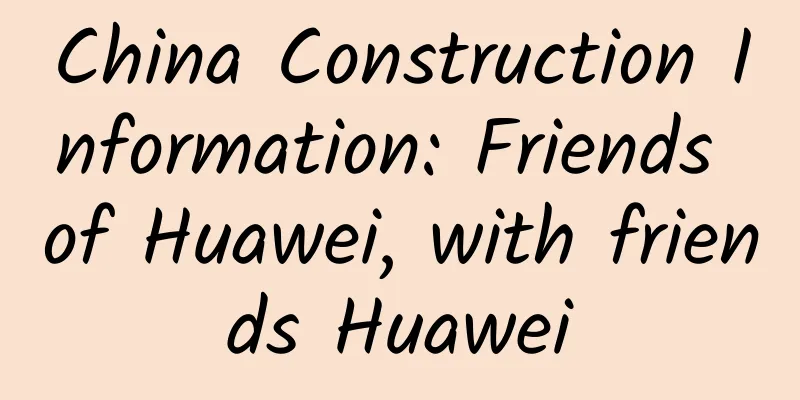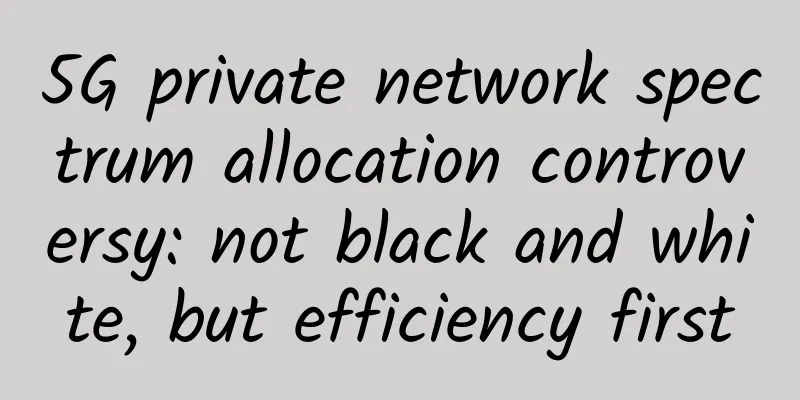What you should know about 5G

|
When it comes to 5G, the most classic and intuitive argument is: users can download a high-definition movie in just a few seconds, while the current 4G LTE network takes more than ten or even dozens of minutes. The reason why we use the video download speed to describe it is because downloading or watching high-definition movies online is currently the closest to our lives and the easiest way to feel the change in network speed. The role of 5G is far more than that. As the transmission rate increases, other emerging applications will also emerge, such as the Internet of Things, virtual reality, and self-driving cars. There are three typical scenarios for 5G, which describe the needs of 5G and also reflect the differences between 5G and 4G. As shown in the figure above, the three scenarios are: enhanced mobile broadband communication (eMBB), massive machine type communication (eMTC) and ultra-high reliability and ultra-low latency communication (uRLLC). eMBB provides higher transmission rate and user experience. The downlink peak transmission rate in 5G will reach 20Gb/s, while the downlink peak rate of 4G is only 1Gb/s. The ultra-high rate will make virtual reality and augmented reality possible; eMRT will realize the interconnection of all things, smart homes, smart grids, etc.; uRLLC can reduce communication delay to less than milliseconds to achieve tactile interconnection, while the delay in 4G is about 70 milliseconds. 5G's ultra-low communication delay and high-reliability transmission can realize automatic driving of cars, etc. 5G is gaining wide attention from academia and industry, and has entered the standard-setting stage (PS: the 5G white paper is also a textbook-like teaching material). If everything goes well, the first 5G commercial network will be realized in 2020. However, what 5G will look like and what breakthroughs it will achieve are still not fully determined. But what is certain at present is that 5G will achieve a thousand-fold increase in network throughput compared to 4G! In order to achieve this goal, many new technologies have emerged. Therefore, improving network throughput can be achieved mainly from three aspects, namely increasing communication bandwidth, increasing cell density and improving spectrum efficiency. Correspondingly, it can be achieved through the following technologies: millimeter wave communication, small cell and large-scale MIMO technology. 1. Improving communication bandwidth - representative technology: millimeter wave Currently, wireless communications mostly use frequency bands below 6 GHz. However, with the increase in the number of users and smart devices, the limited spectrum bandwidth needs to serve more terminals, resulting in a serious decline in the service quality of each terminal. In order to solve the problem of limited spectrum resources, a feasible method is to develop new communication frequency bands and expand the communication bandwidth. For this reason, many operators or equipment suppliers are currently conducting tests on millimeter wave frequency band communications. The millimeter wave frequency band refers to the frequency band of 30-300 GHz (as shown in the figure above). Compared with the original frequency band below 6 GHz, it is a very rich frequency band resource. The wavelength of radio waves in this frequency band is between 1-10 mm. Due to the short wavelength of millimeter waves, the transmission loss is particularly serious in actual communication. Water vapor in the air will cause serious attenuation. It is transmitted in the form of direct waves. It is a typical line-of-sight transmission method with extremely poor penetration ability. Walls, leaves, etc. will cause signal blocking. Therefore, millimeter waves are currently used for transmission between base stations, radars, satellites, etc. (base stations are set up on high ground and there are usually no buildings blocking each other). Because the millimeter wave frequency band has high fading characteristics, it can be combined with large-scale MIMO technology to enhance signal strength, or combined with small cell technology to enhance the distance of signal propagation. 2. Improving cell density - Representative technology: Small cell heterogeneous network The realization of 5G will inevitably require some changes in infrastructure construction, which must be compatible with previous systems and provide stronger services. The deployment of small cells is one of the key technologies to improve spectrum utilization and enhance user service quality. Small cells are different from traditional macro base stations. They only require lower transmission power and can be easily deployed on street lamps and other facilities to serve users in a small range, as shown in the figure above. Since the service range of small cells is small, different small cells and small cells and macro cells can reuse the same spectrum resources, forming a heterogeneous structure with traditional macro cells, greatly improving the spectrum utilization of the system. In addition, small cells can play a relay role, enhance signal strength and coverage, and also increase the number of terminals served by the system. 3. Improve spectral efficiency - representative technologies: massive MIMO and beamforming Massive MIMO is a very promising key technology in 5G. Compared with 8 (or less) transmitting antennas in 4G systems, Massive MIMO will deploy hundreds of antennas on the same antenna array, bringing the antenna array gain to a new level! Massive MIMO has not yet been deployed and applied in practice. It is currently tested in laboratories or in some specific environments. However, the existing test results show that Massive MIMO only needs simple linear precoding processing (such as MRT, ZF) to provide extremely high downlink transmission rates. Beamforming/precoding technology is inseparable from multi-antenna systems. Beamforming technology can make the transmitted signal have a certain directionality, avoid interference with surrounding users, and improve the received signal power of the designated user. As the number of antennas in the massive MIMO system increases, the system can serve more end users. How to avoid user interference generated during signal transmission is an important issue. Beamforming technology is an indispensable part of the massive MIMO system. |
<<: Cisco fully opens a new era of smart office
Recommend
The four major telecommunications operators may realize free roaming settlement in rural areas through resource peer-to-peer exchange
In response to the question of how the four major...
Lisa Host: Los Angeles CN2 GIA line VPS annual payment starts from 199 yuan, upgradeable native IP, optional IP segment
The last time I shared information about Lisa Hos...
A brief analysis of the Time Sensitive Network (TSN) technology for deterministic networks
Author: Lu Yingchuan, unit: China Mobile Smart Ho...
RAKsmart: Hong Kong/Japan/San Jose/Los Angeles popular cloud servers with a discount of 10% and annual payment starting from 79 yuan, and regular cloud servers with a discount of 30%
Last week, we shared information about RAKsmart&#...
V5.NET: 20% off on all dedicated servers, Hong Kong E3 servers starting at 342 yuan per month
V5.NET has launched a regular promotion this mont...
Look up to the sky with 5G, keep your feet on the ground with 4G
[[348928]] October 28 news: Although 5G has alrea...
DediPath Christmas Promotion: Los Angeles/Las Vegas dedicated servers starting at $39 per month, 55% off on all VPS
DediPath has released a Christmas promotion plan,...
HostYun launches new Hong Kong U.2 SSD series VPS, 200Mbps bandwidth VPS monthly payment starts from 18 yuan
In addition to the new computer room, HostYun als...
Smart buildings are no longer far away. See how CommScope connects everything with a twisted pair cable!
[51CTO.com original article] On June 5, 2018, the...
.com domain prices expected to rise for first time in eight years
According to foreign media reports, ICANN, the or...
Netty - Sticky Packets and Half Packets (Part 2)
Continue from the previous article "Introduc...
Aicrypt and Anbai Technology reached a strategic cooperation to build the "Application Security +" of the information industry
On June 15, Aicrypt and Anbai Technology held a s...
How do Internet giants achieve load balancing and high availability? You will understand after reading this article
[[284447]] 1. What is load balancing? What is loa...
Standard Interconnect's new US lightweight cloud starts at 98 yuan/year, and Hong Kong CN2 starts at 198 yuan per year
At the beginning of the year, we shared informati...
When 5G meets edge cloud, it is the fundamental reason why 5G changes the world
On June 6, 2019, a very auspicious day, the Minis...







![[11.11] LOCVPS top up 1000 yuan and get 100 yuan, Hong Kong VPS 30% off, 20% off for all](/upload/images/67cac03bef119.webp)

